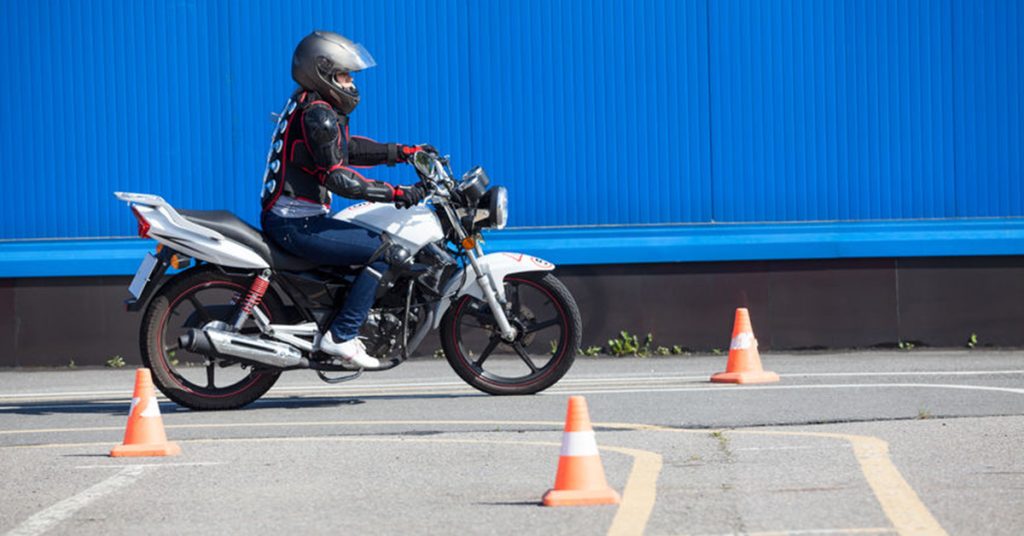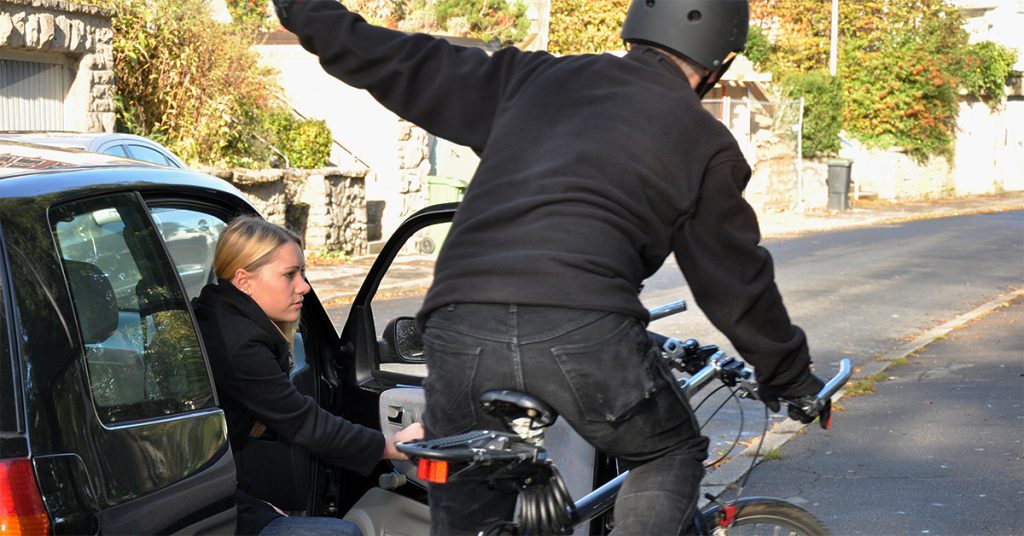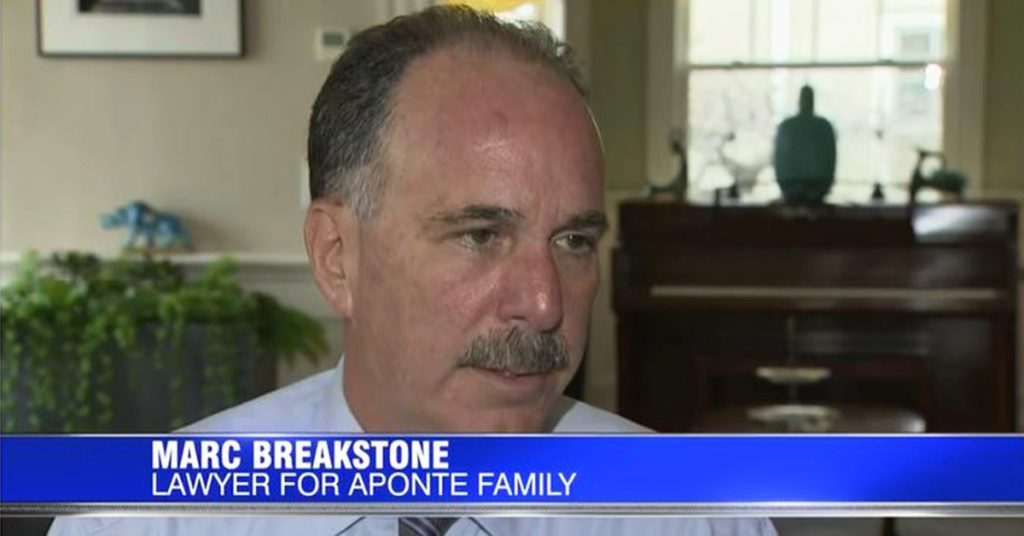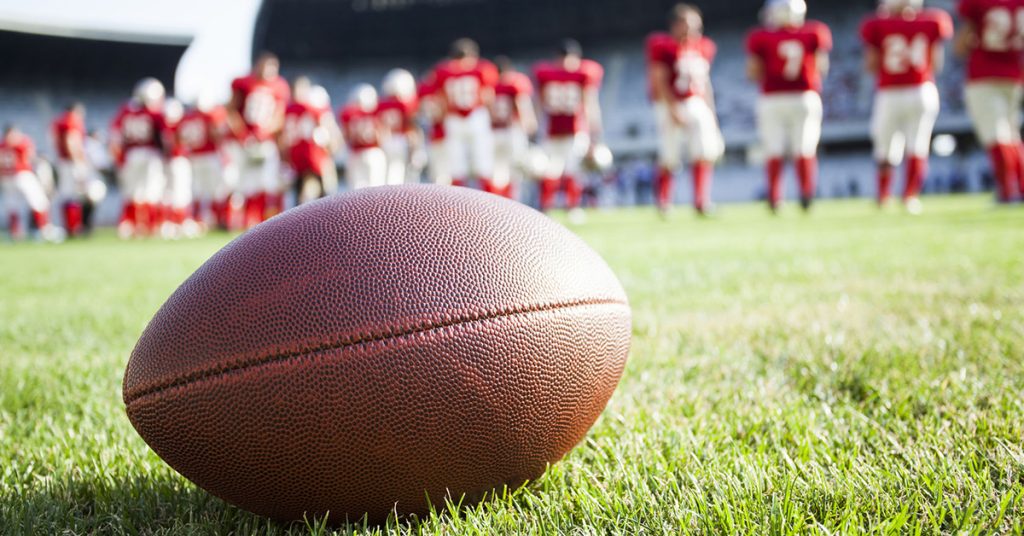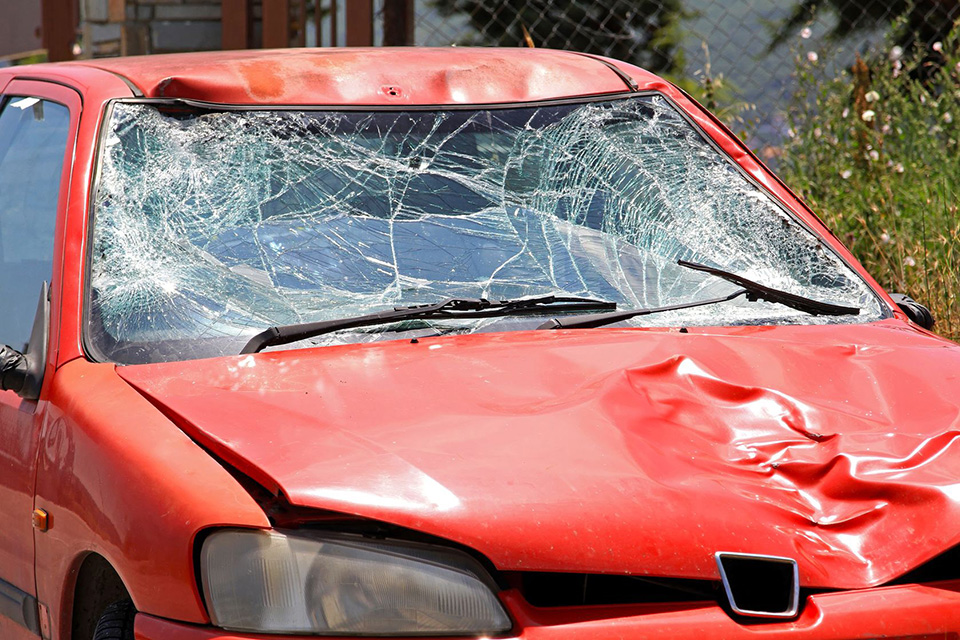Posts by Breakstone, White & Gluck
After Infant Deaths, Fisher-Price Rock ‘n Play Sleeper is Recalled
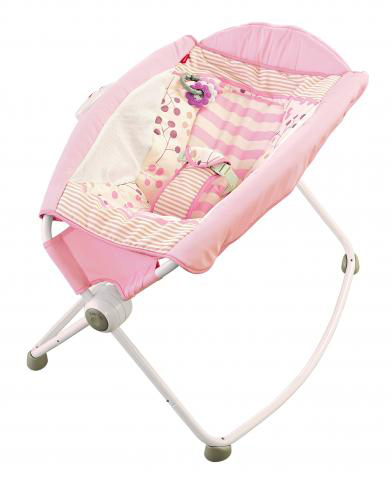
Fisher-Price has recalled its Rock ‘n Play sleeper after an investigation found more than 30 infants died while using it.
It once looked the perfect place to nap and cuddle. But this adorable product – the Fisher-Price Rock ‘n Play Sleeper – wasn’t ever safe. Fisher-Price and the Consumer Product Safety Commission (CPSC) announced the recall of 4.7 million sleepers on April 12, 2019. Parents are being urged disassemble the sleeper and stop using it. The company expects to spend the next several months processing recalls.
Prior to the company’s action, the American Academy of Pediatrics (AAP) had joined Consumer Reports in calling for the product’s removal, stating the Fisher-Price Rock ‘n Play failed to comply with its recommendations, which state infants should only sleep on flat and firm surfaces. Further, the AAP advises infants should not be left on the same surface as other bedding, toys or bumpers, which could increase the risk of infant suffocation or choking.
Fisher-Price, a division of Mattel, is asking parents to contact the company for a refund or voucher toward another Fisher-Price product. The company will offer a full refund for Rock ‘n Play sleepers purchased during the past six months.
Resources:
Fisher-Price Rock ‘n Play Recall Notice, Consumer Product Safety Commission
Mattel and Fisher-Price Recall Page for Parents
The Week of Bad Headlines for Fisher-Price
Fisher-Price and the CPSC announced the product’s recall on Friday, April 12th, following days of pressure from safety organizations. Fisher-Price had initially resisted.
On April 5, the CPSC and Fisher-Price released an initial warning and announced 10 infants had died in the Rock ‘n Play between 2015 and 2019. The infants were all 3 months or older and died after rolling over from their back to their stomach or side.
At that point, there was no recall, but parents were advised to stop placing children in the sleeper once they reach 3 months old, or earlier if they begin turning themselves over.
Days later, Consumer Reports came out with a troubling report linking the product to not 10, but 32 infant deaths since the 2009 release. The consumer watchdog called on the CPSC to immediately issue a recall of the defective product. In response, Fisher-Price said the company did not believe any of these deaths were caused by the sleeper. Rather, the company said medical and health conditions were cited as the cause in some deaths, and in other cases involved improper use of the sleeper.
Shortly after, Americans heard from the AAP: “This product is deadly and should be recalled immediately.”
Despite the AAP recommendations, Fisher-Price managed to introduce the Rock n’ Play and sold it for a decade. Before the recall, it was selling for $40 to $149 at various retailers. The product sits elevated in a canopy-like environment for sleeping and sitting and featuring a “motorized rocking motion” and musical tunes. The problem is when a baby’s head falls forward or sideways. This can block the child’s access to oxygen.
Parents should do careful research when buying children’s products. Monitor the CPSC website for warnings and recalls, as well as the Consumer Reports website. We can expect to hear more about the dangers of other sleeper products in the near future, as Consumer Reports continues its investigation. On April 11, it reported on four other child deaths linked to Kids II sleepers.
More Reading:
Fisher-Price Rock ‘n Play Sleeper Should Be Recalled Immediately, Consumer Reports
Fisher-Price Rock ‘n Play Recall, New York Times
Buying Safe Toys, Breakstone, White & Gluck Project KidSafe
Contact the CPSC About Dangerous Products and Injuries
If you are ever injured while using a consumer product, you should contact the CPSC to report the injury. The CPSC is the federal agency responsible for overseeing the recall process, releasing warnings to the public and collecting injury data. The CPSC works with manufacturers to issue product recalls.
Free Legal Consultation – Contact a Boston Product Liability Lawyer
If you have been injured, it is also in your best interests to consult a Boston product liability attorney. At Breakstone, White & Gluck, our Boston attorneys have represented clients injured by defective products, medical devices and vehicles. Prompt investigation is necessary in product liability cases and our attorneys are known for our thorough, detailed and capable investigation.
For a free legal consultation, contact our lawyers today at 800-379-1244 or 617-723-7676 or use our contact form.
Safer Ride for Cyclists After Cambridge Votes to Expand Protected Bike Lanes
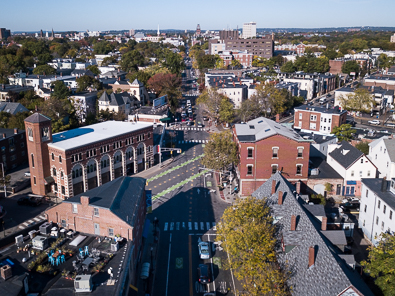
Bike lanes in Inman Square, Cambridge, Massachusetts. Photo credit: www.bwglaw.com.
Over the past few years, there has been a growing sense of excitement about safer cycling in Cambridge. With a vote this week, the Cambridge City Council has signaled there is more to come.
The City of Cambridge has many bike lanes, but in 2017, city officials accelerated development of protected bike lanes, which place a physical barrier or extra room and road markings between cyclists and traffic. The city did this with a heavy heart, after fatal bicycle crashes claimed the lives of two cyclists in 2016. One of the cyclists was killed in Inman Square in a dooring crash; the other died in a bicycle collision with a truck in Porter Square.
Then, during 2017, the City of Cambridge rolled out new bike lanes in key travel corridors, including Brattle Street in Harvard Square and Massachusetts Avenue, near Cambridge Rindge & Latin, more than a mile altogether. The city finished the year with 25.8 miles of bike lanes, including 4.2 miles of separated bike lanes, according to a report by Wicked Local Cambridge.
Since then, cyclists and safety groups, such as Cambridge Bicycle Safety, have urged the Cambridge City Council to do more. This week, the City Council approved the Cycling Safety Ordinance, paving the way for more protected bike lanes.
The ordinance calls on the city to add protected bike lanes when roads identified by the Cambridge Bicycle Plan are reconstructed. Once complete, the bicycle plan will create an impressive 20-mile network of protected bike lanes.
The ordinance means residents no longer have to lobby for protected bike lanes when roads are rebuilt. Until now, city officials have had to grant permission on a street-by-street basis or not at all.
There may still be some debate though. The city manager can ultimately veto construction of a protected bike lane based on factors such as a street’s physical layout or the costs. If this happens, the manager must document the reason in writing.
Cambridge officials say they are unaware of any other communities in Massachusetts or across the U.S. which have adopted such a far-reaching policy to create protected bike lanes.
We suspect bicycle committees and planners far and wide will be watching. Protected bike lanes improve safety for cyclists, but the impact goes further by giving everyone on the road clear markings to follow. For drivers and their passengers, these markings are visual reminders not to drive, park or open vehicle doors in bike lanes or they could cause a bicycle crash in Cambridge or any other U.S. city.
StreetsBlog reported on a 2012 study on bike lanes published by the American Journal of Public Health. The study found cyclists on streets with bike lanes had a 50 percent lower chance of injury over streets without bike lanes. Meanwhile, protected bike lanes had the potential to reduce injuries by as much as 90 percent, which is a tremendous figure. Even multi-use paths and off-street trails had a lesser impact, reducing injury by 60 percent compared to roads with bike infrastructure.
About Breakstone, White & Gluck – Boston and Cambridge Bicycle Accident Lawyers
Breakstone, White & Gluck specializes in representing cyclists and pedestrians who have been injured by the negligence of drivers and rideshare vehicles in Massachusetts. If you have been injured, the most important step you can take is to learn your legal rights for seeking compensation. For a free legal consultation, contact our Cambridge bicycle accident attorneys at Breakstone, White & Gluck at 800-379-1244 or 617-723-7676 or use our contact form.
Massachusetts Motorcycle Safety Tips
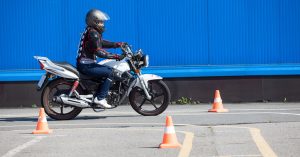
Taking a few essential steps now can help motorcyclists reduce their risk of injury this season.
By now, many Massachusetts motorcyclists are ready for warmer days ahead. At Breakstone, White & Gluck, our attorneys represent motorcyclists who have been injured and we are committed to sharing safety tips to protect from motorcycle accidents and injuries.
Whether you ride in Boston, Cape Cod or Central Massachusetts, here are a few essential steps:
Massachusetts Rider Education Program
This is a great starting point for new motorcyclists. Attendance is worthwhile because you have to opportunity to learn from more experienced motorcyclists and meet others looking to learn. You may also be able to fulfill your licensing requirements here. When you are finished, take your certificate of completion right to your auto insurance agent and ask for an insurance discount.
More experienced motorcyclists will also find something here, whether they seek new skills or want to review fundamentals to avoid motorcycle crash situations.
Sponsored by the Massachusetts Registry of Motor Vehicles, the program offers 15 hours of course material, includes five hours in the classroom and 10 hours of hands-on motorcycle instruction. Motorcyclists under age 18 must complete the training before taking the Massachusetts Motorcycle License test.
The best way to begin is by visiting the Massachusetts Ridership Education Program website. You must sign up for an approved motorcycle training program to qualify for the insurance discount. Programs are offered throughout the state, in Ayer, Bedford, Beverly, Brockton, Foxborough, Framingham and other communities.
Massachusetts Auto Insurance for Motorcyclists
No one ever expects to be injured in a motorcycle crash. But it can happen and you want to make sure you and your family are protected. Start by learning about your Massachusetts auto insurance policy.
While auto insurance coverage for motorcyclists and drivers is similar, there is a key difference in Massachusetts. Unlike drivers, motorcyclists do not receive PIP (personal injury protection) benefits. PIP benefits provide the first $8,000 of medical expenses, lost wages and other expenses for a driver who is injured. The loss of these benefits creates another obstacle for motorcyclists after a crash.
Because motorcyclists do not have access to PIP, our attorneys recommend they purchase other coverages to make up for this, including Medical Payments, Uninsured Auto and Underinsured Coverage and Bodily Injury Coverage. To help you get started, our Boston motorcycle accident attorneys have written this article, “Massachusetts Motorcyclists: Buy the Right Types of Auto Insurance to Protect Yourself and Your Finances.”
We encourage you to read the article and show it to your insurance agent. Talk to other motorcyclists about their experiences buying insurance coverage. In addition to providing compensation if you are injured, buying the right types and amounts of coverage can bring you peace of mind now as you get ready to ride this season.
Motorcycle Helmet and Eye Protection
Massachusetts has had a mandatory helmet law since 1967 and is one of 28 states which currently require motorcyclists to wear helmets. Massachusetts has a “universal law,” which requires both motorcyclists and their passengers to wear helmets. The statute is M.G.L. c. 90, Section 7. Riders can be fined up to $100 for failure to wear a helmet.
Helmets must meet the U.S. Department of Transportation’s Federal Motor Vehicle Safety Standard No. 2018. You will see a label with this number on the inside and outside of the helmet. Along with the helmet, motorcyclists must wear goggles or a protective face shield. This is not a requirement if the motorcycle has a windshield or screen.
About Breakstone, White & Gluck – Boston and Worcester Motorcycle Accident Lawyers
Breakstone, White & Gluck is a Boston personal injury law firm which represents motorcyclists who have been injured in Massachusetts. With over 100 years combined experience, our lawyers are recognized for our results for clients across the state, from Boston to Worcester to Cape Cod. If you have been injured, learn your legal rights for seeking compensation. Our attorneys offer a free legal consultation: 800-379-1244 or 617-723-7676. You can also use our contact form.
Massachusetts Drivers: Start Spring by Learning the Dutch Reach Method
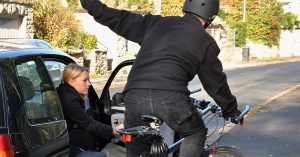
A passenger nearly causes a dooring accident by opening her car door, without checking for cyclists. By using the Dutch Reach method, drivers and passengers can reduce their risk of causing these injuries.
As April begins, so come more cyclists on the road. Drivers should consider each cyclist a reminder to use the Dutch Reach method and never open your car door without checking. You can cause serious and even fatal injuries to a cyclist. In Massachusetts, you may also be held financially responsible for the tragedy that follows.
At Breakstone, White & Gluck, our lawyers have represented many cyclists injured by dooring accidents and other bicycle collisions in Boston, Cambridge and across the state. We urge drivers to take a few minutes to learn about the Dutch Reach method to prevent injuries.
Lack of awareness causes many injuries. Many drivers park and open their car door automatically, heedless of its risk to passing cyclists or to themselves (or door!) even as the number of cyclists sharing our roads increases by the year. In Boston alone, the city’s bike counting program tracked nearly 40,000 bike trips each day in 2017. During 2019, the concern spreads beyond cyclists as dockless scooters arrive in the Boston area.
What is the Dutch Reach?
Dooring accidents happen after drivers park and exit their vehicles without checking. The Dutch Reach method attempts to slow the process down and give drivers more time to see cyclists and anticipate potential accidents.
The approach calls on drivers to park and then check their rear-view and side-view mirrors. If there are no cyclists or pedestrians nearby, drivers can turn to open the door with their far hand. In the process, they should get a good look at the road behind them. Both drivers and passengers are advised to follow this approach. By doing so, drivers can limit the risk for injuries to cyclists as well as pedestrians.
Watch this video to learn about the Dutch Reach method. The demonstration begins around the 1 minute mark.
https://youtu.be/ppBuWxvypfg
The Dutch Reach method originated in the Netherlands. But Michael Charney, a Cambridge doctor, began campaigning for awareness in Massachusetts in 2016, after the devastating bicycle crash which killed Amanda Phillips in Cambridge’s Inman Square. The 27-year-old was hit by two vehicles, first an open door.
As a result of this campaign, Massachusetts updated its state driver’s manual in 2017, adding instructions for the Dutch Reach method. Dooring has been against the law in Massachusetts since 2009. You can be cited and fined up to $100 per offense for interfering with other traffic, including a pedestrian or cyclist. You can also face a civil claim from the victim seeking financial damages. For years, drivers and cyclists have learned the dangers of dooring crashes after a collision; but adding the Dutch Reach instructions to the Massachusetts driver’s manual now provides clear and concise instructions for how to prevent these crashes.
Following success in Massachusetts, Charney’s campaign has continued, resulting in two other states, Washington and Illinois, adding the Dutch Reach to the state driver’s manual.
Safety Reminders for Traveling Near Cyclists
- Expect cyclists on the road. Many cyclists will travel in the bike lane or to the right of traffic, but remember that cyclists have the legal right to operate in the traffic lane when they need.
- Slow down. When you travel fast, you have less time to respond.
- Follow cyclists at a safe distance. Cyclists should have at least three feet of space when you pass them.
- The further back you travel, the wider your field of vision.
- Remember that cyclists may need to leave the bike lane. You need to make sure you can respond if they do.
- Expect someone may stop unexpectedly, such as a delivery truck or an Uber or Lyft vehicle picking up a passenger.
- Be careful not to startle a cyclist. Never honk.
- Approach crosswalks and traffic signals with caution. Cyclists are supposed to stop, but expect there may be times they can’t due to traffic conditions.
- Use your mirrors. Check for cyclists behind you and next to you, especially before turning or parking.
- Finally, again, be careful when parking. Use the Dutch Reach method. Be cautious when parking in unfamiliar streets and avoid parking near traffic signals and crosswalks.
About Breakstone, White & Gluck
The Boston personal injury lawyers at Breakstone, White & Gluck represent cyclists who have been injured by the negligence of drivers. We also work to prevent bicycle accidents and improve safety through our sponsorship of bicycle clubs in the Boston area and our Project KidSafe campaign, which has donated more than 25,000 bicycle helmets to children across Massachusetts.
If you have been injured, Breakstone, White & Gluck offers a free legal consultation. Learn more about our attorneys.
Lynnway Auto Auction and Company President Facing Manslaughter Charges in 2017 Crash Killing 5 People
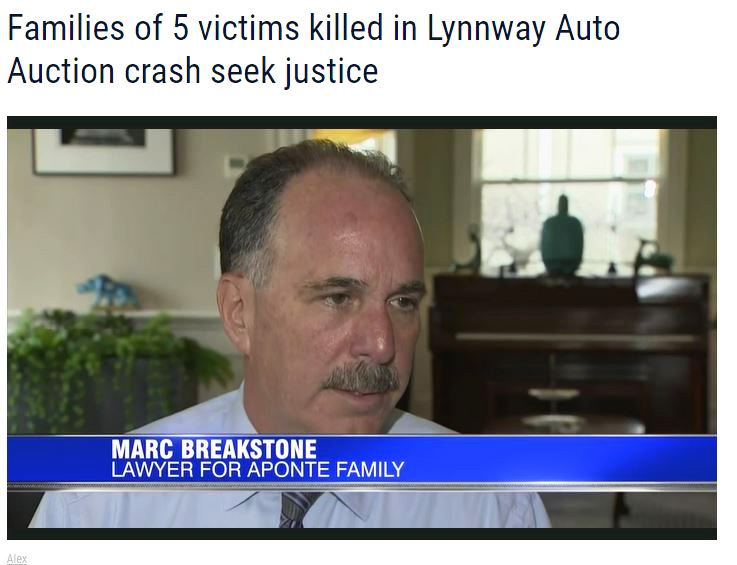
Attorney Marc L. Breakstone, who is representing a family who lost a loved one in the Lynnway Auto Auction crash, speaks to WHDH TV in Boston. Watch.
Attorney Marc L. Breakstone was interviewed by WHDH TV yesterday, following the announcement that the Lynnway Auto Auction, Inc. and company president James Lamb will each face five counts of manslaughter in the 2017 crash killing five people. Breakstone is representing one of the families who lost a loved one.
“This goes beyond normal everyday negligence,” he said. “This was gross negligence that created a dangerous environment for employees and others at the auction.”
Watch the interview on the WHDH website.
City of Everett is Next Step for Bluebikes Expansion
Last month, the City of Everett announced it was joining the Bluebikes regional bike share. This was welcome news for commuters, especially Everett residents who travel into Somerville, Cambridge and Boston. Everett will become the first Massachusetts community to offer both the Bluebikes and dockless bikes.
Everett is also the first community to join the metro-Boston bike share in at least five years. The City of Boston first brought the program – then called Hubway – to the region in July 2011. It began with a fleet of 600 bikes parked at 60 stations within the city of Boston.
Massachusetts Nursing Homes Reach Settlements in Negligence and Deaths
Attorney General Maura Healey has announced seven Massachusetts nursing homes have agreed to pay settlements ranging from $30,000 to $200,000 to settle allegations of substandard care or regulatory violations. The AG’s office investigated and found several cases of injury and deaths in the nursing homes. In addition to fines, the facilities had to agree to implement three-year compliance programs, which include monitoring, audits and training. As a result of these investigations, two nursing home professionals agreed not to do business in Massachusetts for the next seven years. They have closed one of their nursing homes and are in the process of selling the other.
The settlements highlight the fact that many elderly patients regularly face nursing home neglect, unsafe conditions and inexperienced staff in Massachusetts nursing homes.
Jewish Nursing Home of Longmeadow
This nursing home will pay $85,000 to resolve allegations that it knew and failed to update inadequate bed rails, resulting in one patient’s death and serious injuries to a second patient. The nursing home had neglected to install new federally-compliant bed rails. As part of the settlement, Jewish Nursing Home of Longmeadow must participate in a three-year compliance program, during which it will focus on updating policies and procedures, conducting annual training programs and annual audits.
Woodbriar Health Center of Wilmington and Braemoor Health Center of Brockton
Synergy Health Centers agreed to pay between $100,000 and $200,000 to settle the AG’s allegations that the staff caused delays in delivering medical care, contributing to the deaths of two patients. In addition, the AG’s office reports that Woodbriar Health Center in Wilmington is being sold and Braemoor Health Center in Brockton has been closed.
Woodbriar Health Center is located in Wilmington in Middlesex County, near Burlington. There was a very serious incident there; a patient fell from a mechanical lift under a certified nursing aide’s watch. The staff then failed to communicate the patient’s X-ray results to her physician, delaying medical care. The state found the fall, communication failures and delay in care were “substantial contributing factors” in her death.
Braemoor Health Center, a Brockton nursing home south of Boston, was where the staff tried to resuscitate a patient who stopped responding during feeding. The staff failed to report the death to the Massachusetts Department of Public Health in a timely way.
Beaumont Rehabilitation and Skilled Nursing Center of Westborough
Owned by Salmon Health and Retirement, Beaumont was accused of failure to establish safeguards to protect nursing home patients from falls. As a result, one patient fell 20 times. The last time, Beaumont did not call a nurse practitioner to evaluate her injury. Another mistake was the patient was not given pain medication before she died. The nursing home will now pay $37,500 to resolve the allegations and implement a three-year compliance program.
The Rehabilitation and Nursing Center at Everett
The nursing home was treating a patient with a history of escaping. The patient was on a “secure unit” but still managed to escape through several unlocked doors. Further, the home neglected to maintain the patient’s medical record for two months before the escape. The nursing home must now begin a compliance program, which will in part focus on staff retraining.
Wakefield Center
Owned by Genesis Health Care, the Wakefield Center will pay $30,000 and implement a compliance program to resolve allegations that a nurse’s inadequate training contributed to a patient’s death. The AG alleged the nurse did not accurately transcribe the patient’s medication order, which resulted in a blood clot and ultimately, the patient’s death.
Free Legal Consultation – Boston Nursing Home Neglect Lawyers
Since 1992, Breakstone, White & Gluck of Boston has represented patients injured by the negligence and wrongdoing of nursing homes and medical professionals. Families place their trust in nursing homes and nursing homes have a duty to follow the patient’s medical care plan, properly administer medications and follow state and federal safety regulations. Injuries can happen when nursing homes neglect patients, under staff or hire inexperienced professionals.
If you or a loved one have been injured by nursing home negligence, learn your legal rights. For a free legal consultation, contact Breakstone, White & Gluck at 800-379-1244 or 617-723-7676 or use our contact form.
City of Boston Pursues 20 MPH Speed Limit to Reduce Traffic Fatalities and Pedestrian Injuries
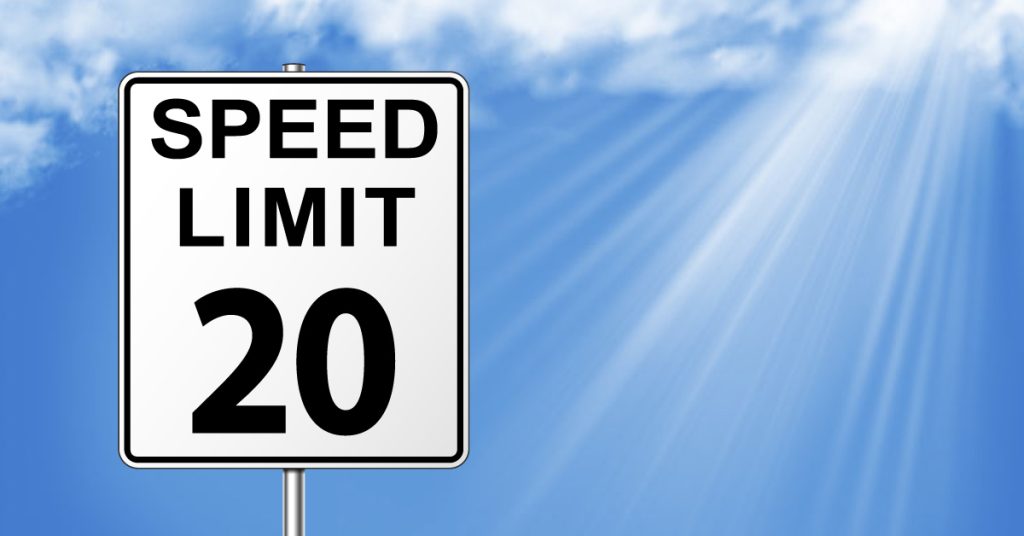
In Boston, city officials are interested in lowering speed limits to 20 mph in neighborhoods to reduce traffic fatalities. The proposal comes just two years after the city lowered speeds from 30 to 25 mph and will require state approval.
First, the City of Boston dropped speed limits to 25 mph, with a goal of reducing traffic fatalities and pedestrian injuries. Now, Mayor Marty Walsh and the Boston City Council have their eyes on 20 mph on neighborhood streets. The next step is obtaining state approval.
The City of Boston first sought to lower speed limits as part of its VisionZero campaign a few years ago. That proposal also required approval from the state Legislature and Gov. Baker’s signature.
Gov. Baker signed the Municipal Modernization Bill into law in 2016, including language that allowed cities and towns to lower the default speed limit from 30 to 25 mph. Cities and towns can now lower speed limits on all (or select) municipal roads in thickly settled areas or business districts. Many communities have done so, including Boston, Cambridge, Quincy, Arlington and Dedham. Now, unless traffic signs are posted otherwise, it’s 25 mph in these communities.
While the speed limit in these communities has dropped, the fines remain the same. In Massachusetts, speeding carries a $105 fine for speeding. If you exceed the speed limit by 10 mph, there is an extra $10 fine per each mile per hour.
Boston was the first to approve lower speeds, with this taking effect in January 2017. But the City of Boston’s goal was always 20 mph and remains so for city neighborhoods. In fact, the Boston City Council approved a 20 mph speed limit back in 2016.
As the City of Boston pursues a 20 mph speed limit for neighborhoods, there is early data showing that the 30 to 25 mph drop has changed traffic patterns for the better. According to an Insurance Institute for Highway Safety study, after the lower speed limit took effect, Boston saw a 29 percent reduction in traffic traveling over 35 mph.
Mayor Walsh also announced other transportation initiatives last week, including the creation of special drop-off and pick-up sites for Uber, Lyft and other ridesharing vehicles. Data from the Massachusetts Department of Public Utilities confirms that Boston is the truly the hub of ride-hail services. During 2017, nearly 35 million rideshare trips began in the city. Boston saw more than 6 times as many rideshare starts as Cambridge, which has the second largest presences in Massachusetts.
Walsh’s other proposal is to give every student in the Boston public school system a MBTA pass. The price tag hasn’t been negotiated yet with the MBTA. Currently, the city receives a subsidy from the MBTA and pays $5.6 million for MBTA passes for students in Grade 7 and 8 who live more than a mile and a half from their schools.
Data That Supports 20 MPH
- According to the VisionZero Network, 9 out of 10 pedestrians who are hit by a vehicle traveling 20 mph survive. Increase the speed to 30 mph and the survival rate drops to 50 percent. At 40 mph, just 10 percent of pedestrians survive.
- Speed is a factor in nearly one-third of all traffic deaths in the U.S. (Source: VisionZero Network).
- Speeding crashes claimed the lives of 59,374 people on U.S. roads from 2010 to 2015 (Source: VisionZero Network).
- Cars speeding through red lights are a leading cause of urban car crashes, according to the Insurance Institute for Highway Safety. Some states and local communities permit use of red light and speeding cameras to improve enforcement. But many do not, including Massachusetts and our neighboring New England states. Rhode Island is the one exception, allowing red light cameras by state law and city ordinance. State law permits use of speeding cameras in school zones on weekdays.
Related:
Walsh to propose 20 mph limit in neighborhoods and new Uber, Lyft pickup sites, Boston Globe, March 7, 2019
Slow Down! Boston, Cambridge and Other Cities Have Dropped Speeds to 25 MPH, Massachusetts Injury Lawyer Blog, May 23, 2017
Massachusetts Concussion Legislation Would Ban Students In Grade 7 or Younger from Playing Football
Should students have to wait until they finish 7th grade to play football in Massachusetts? Lawmakers are being asked to consider legislation to delay the start of play to protect players from concussions.
“An Act for No Organized Head Impacts to Schoolchildren,” has been filed by State representatives Paul A. Schmid III (D-8th Bristol) and Bradley H. Jones Jr. (R-20th Middlesex). The legislation would ban children in 7th grade or younger from playing or practicing any form of organized tackle football. Schools would be held accountable and face fines for violations:
- $2,000 for each violation
- $5,000 for subsequent violations
- $10,000 when serious physical harm result to participants
Children would be allowed to play flag football or any form of football which does not involve tackle play. The proposal does not include any other sport.
Causes of Concussions
The Centers for Disease Control and Prevention (CDC) define a traumatic brain injury (TBI) as a disruption to the brain caused by a blow or jolt to the head. Concussions are considered a mild TBI, which can result in a brief change of mental alertness or consciousness. A severe TBI can result in a longer period of unconsciousness or mental change.
Symptoms may not be immediately evident after a concussion, especially if the person or those around them are not familiar with the symptoms, which can include an inability to think clearly, memory problems, feeling dazed and mood, behavior or personality changes. Headaches, nausea and vomiting can also set in.
Beyond the sports field, falls are the leading cause of concussions, according to the CDC. Adults over age 65 and children under 14 are most likely to suffer a fall leading to a head injury. Car crashes are the third leading cause of concussions, followed by being struck in the head by an unspecified object, such as in a construction site accident or by violence.
Concussions can also happen on the sports field. Not every contact necessarily results in a concussion, but to identify injuries, Massachusetts and other states have already passed concussion education and training laws. Known as “return to play” laws, these require high school and middle school students to be examined by a medical professional before they can participate in sports again.
Research on Concussions and the Impact on Younger Football Players
New research shows there is a measurable impact when younger children play football. In a study of 26 football players – all age 12 – Wake Forest researchers found changes in the corpus callosum, which joins the two sides of the brain and integrates cognitive, motor and sensory functions. The players underwent MRIs to examine the changes prior to the three-month season and three months after the season concluded. They were compared to 22 other students who did not participate in contact sports.
Players who suffer a concussion need proper rest and treatment so they can properly heal and to reduce the chance for another injury. Researchers have documented this risk; one study found high school and college students who sustained concussions were four to six times more likely to suffer a second injury (Source: McGill University in Montreal).
Concussion Legislation Filed in Other States
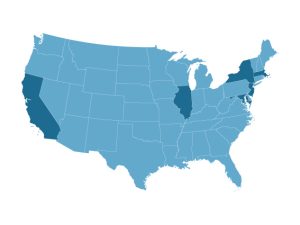
Lawmakers in Massachusetts and five other states have proposed banning tackle football for children younger than 12 or for those in seventh grade or younger. Data from Shape America.
Massachusetts isn’t taking the field alone on concussions. At least five other states are also debating tackle football bans for children under age 12. These states include Illinois, California, Maryland, New York and New Jersey, according to Boston.com. But none of the proposals are on track to reach state governors.
All 50 states already have “return to play” laws aimed at reducing youth sports-related concussions, according to the National Conference of State Legislatures. Washington state was the first to pass such a law in 2009. By 2015, every other state had enacted a similar law.
In most states, these laws mandate concussion awareness training and education to prevent concussions among student athletes. According to Shape America, 48 states require students suspected of having concussions to sit out at least 24 hours.
Arizona and South Carolina allow students back on the field the same day with a doctor’s approval.
Passed in July 2010, the Massachusetts concussion law requires parents, volunteers, coaches and school nurses to receive specialized concussion awareness training. This is to help them recognize concussion symptoms and help students receive treatment as soon as possible.
As in other states, the Massachusetts law requires medical clearance before students can return to sports. Schools are then required to maintain detailed record-keeping related to a student’s injury and progress in the classroom and on the field. The law is M.G.L. ch.111 §222. The Code of Massachusetts Regulations is 105 CMR 201.000.
All middle and high schools which offer sports through the Massachusetts Interscholastic Athletic Association (MIAA) must follow the concussion safety law.
Ignition Interlock Devices for First-Time Drunk Drivers is Back Before the Massachusetts Legislature
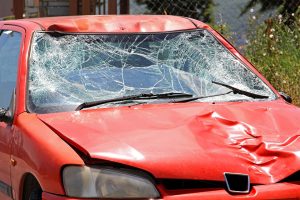
The Massachusetts Legislature is being asked to reconsider an ignition interlock law for first-time OUI offenders.
A proposal to expand use of ignition interlock devices for drunk drivers is back before the Massachusetts Legislature.
Gov. Charlie Baker and Lt. Gov. Karyn Polito’s transportation bill includes the proposal to mandate ignition interlocks for first-time convicted drunk drivers. Currently, Massachusetts drivers convicted for the first time may seek hardship licenses allowing them to travel for work and specific purposes. Baker and Polito’s proposal would also put ignition interlock devices in their vehicles for at least six months following conviction. The devices test whether drivers are under the influence and if so, prevents them from starting their vehicle.
In Massachusetts, it is illegal to operate a motor vehicle with a blood alcohol concentration of .08 or higher, under M.G.L. c.90 § 24. The limit is .02 for drivers under 21. If police suspect drivers are intoxicated, they can be stopped and given a breathalyzer test. Drivers charged with operating under the influence can face a loss or suspension of their Massachusetts driver’s license and fines. Alcohol education training is a requirement in Massachusetts.
In addition, drivers can be sentenced to serve jail time, which is more common for subsequent offenses or when their actions cause death or serious injury.
As for drivers with more than one drunk driving offense, Massachusetts law does require them to use ignition interlock devices for a period of two years. M.G.L. c.90 § 241/2.
MADD and safety advocates say this is too little. And it falls short of the National Highway Traffic Safety Administration’s recommendation, which calls on states to require first-time offenders to use the devices and establish a minimum length of time for use. Twenty nine states have done so, according to the National Conference of State Legislatures.
Drunk driving continues to be a serious problem, killing almost 30 people daily across the U.S. (Source: NHTSA). Meanwhile, the state of Massachusetts reports about 150 people are being killed by drunk drivers each year. These drivers have a blood alcohol concentration of .01 and higher. Eighty percent of the deaths were caused by drivers operating with a blood alcohol concentration of .08 or higher.
Massachusetts Law: Drunk Drivers and Other Responsible Parties in Liquor Liability and Drunk Driving Injury Cases
In Massachusetts, when drunk driving leads to injury, a driver can be convicted of operating under the influence by the criminal courts.
Further, they can be held liable and have to pay monetary damages to the victim or multiple victims. Our Boston car crash attorneys have handled liquor liability cases for injury victims and their families for more than 25 years in Massachusetts. Our attorneys are experienced in investigating these crashes and identifying all the parties who may share responsibility. In addition to drunk drivers, commercial establishments such as bars and restaurants have a responsibility not to serve patrons who are already intoxicated. This area of law is known as dram shop liability.
Individuals also carry responsibility when minors consume alcohol at their homes under social host liability law. When someone provides alcohol to a minor – or their teenager does so – it’s a consequential offense in Massachusetts. A parent can be held liable and have to compensate the injured person or persons. Parents can also face criminal charges leading to fines and jail time.
About Breakstone, White & Gluck
Breakstone, White & Gluck is a Boston law firm specializing in representing individuals injured in car accidents, truck crashes and other collisions caused by negligent and reckless drivers. Our lawyers are experienced in representing drivers, pedestrians, cyclists and motorcyclists injured across Massachusetts, including in Boston, Cambridge, Somerville, Everett, Lynn, Newton and Waltham.
For a free legal consultation, contact our car accident lawyers at 800-379-1244 or 617-723-7676 or use our contact form.


